Pest management during the panicle initiation stage of paddy cultivation is crucial for ensuring a healthy crop yield. Various pests frequently target this stage, which is crucial for rice development. Effective pest control strategies at this point can significantly impact the quality, quantity of the harvest.
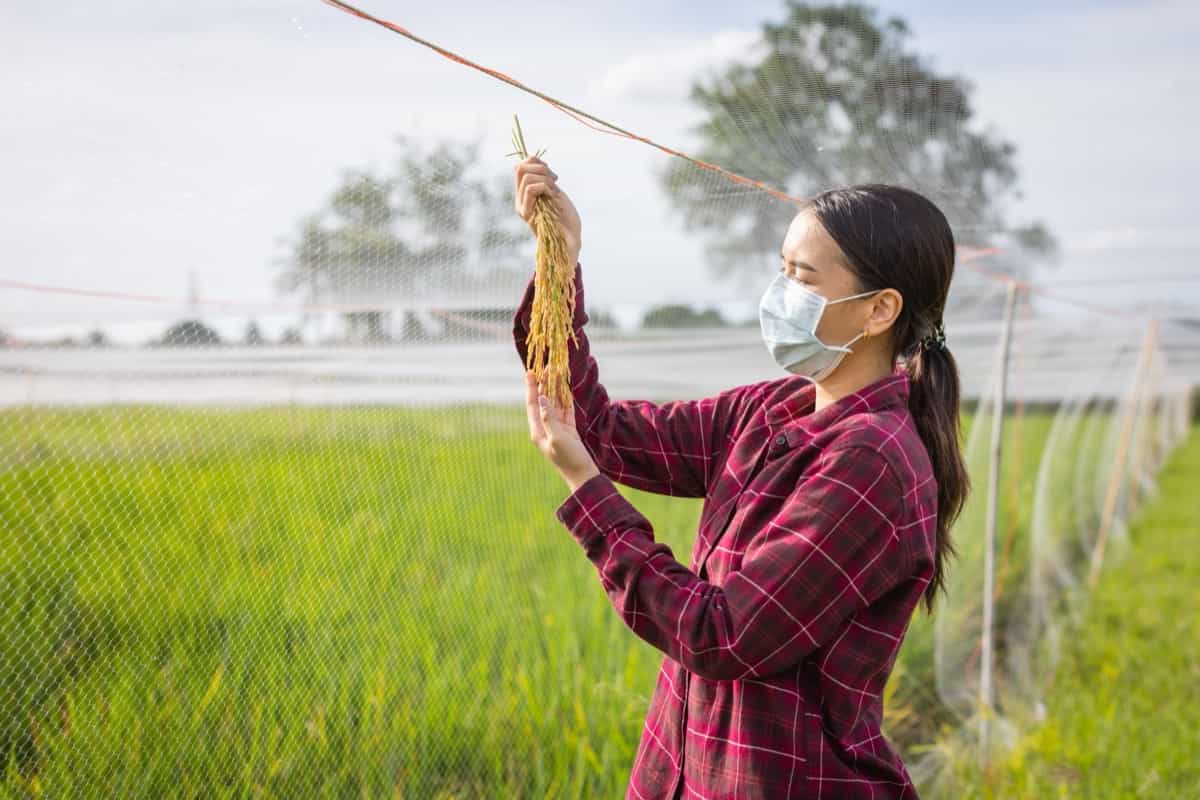
This blog will explore the common pests affecting paddy at this stage, along with practical and sustainable methods for managing them. Our focus is on providing accurate, easy-to-understand information to help farmers protect their paddy crops and maximize productivity.
Pest Management in Paddy at Panicle Initiation Stage
What is the Panicle Initiation Stage?
The panicle initiation stage is a critical phase in the growth and development of paddy plants. It is the stage when the reproductive organs of the plant, called panicles, begin to form inside the stem. The panicle initiation stage usually occurs about 40-60 days after sowing, depending on the variety and environmental conditions.
Pest management is very important in paddy at the panicle initiation stage because it can affect the yield and quality of the crop. Some of the common pests that can damage paddy at this stage are stem borers, leaf folders, plant hoppers, and leafhoppers. These pests can cause direct injury to the panicles or transmit diseases that can reduce the grain filling and increase the percentage of unfilled grains.
Growth Stages of the Rice Plant
Vegetative Stage (Germination to Panicle Initiation)
- Germination: It begins with seed germination, where the seed absorbs water, swells, sprouts a root, and shoots. This stage is vital for establishing a healthy plant.
- Seedling Growth: After germination, the plant enters the seedling phase, characterized by rapid growth of the shoot and root system. Proper nutrition and water management are crucial here.
- Tillering: As the plant matures, it produces tillers – branches growing from the main stem. Each tiller has the potential to bear a panicle, the flowering part of the plant. Factors like plant density, nutrition, and water availability influence tillering.
Reproductive Stage (Panicle Initiation to Flowering)
- Panicle Initiation: This marks the beginning of the reproductive phase. The plant starts to divert energy from vegetative growth to developing the panicle.
- Boot Stage: The panicle develops within the stem’s protective sheath. Ensuring adequate nutrients and water is critical to support this energy-intensive phase.
- Heading and Flowering: The panicle emerges from the stem, and flowering occurs. This stage is sensitive to environmental conditions, and stress can significantly impact grain filling and quality.
In case you missed it: New Paddy Varieties in India: High-Yielding, Disease-Resistant, and Aromatic Rice Cultivars
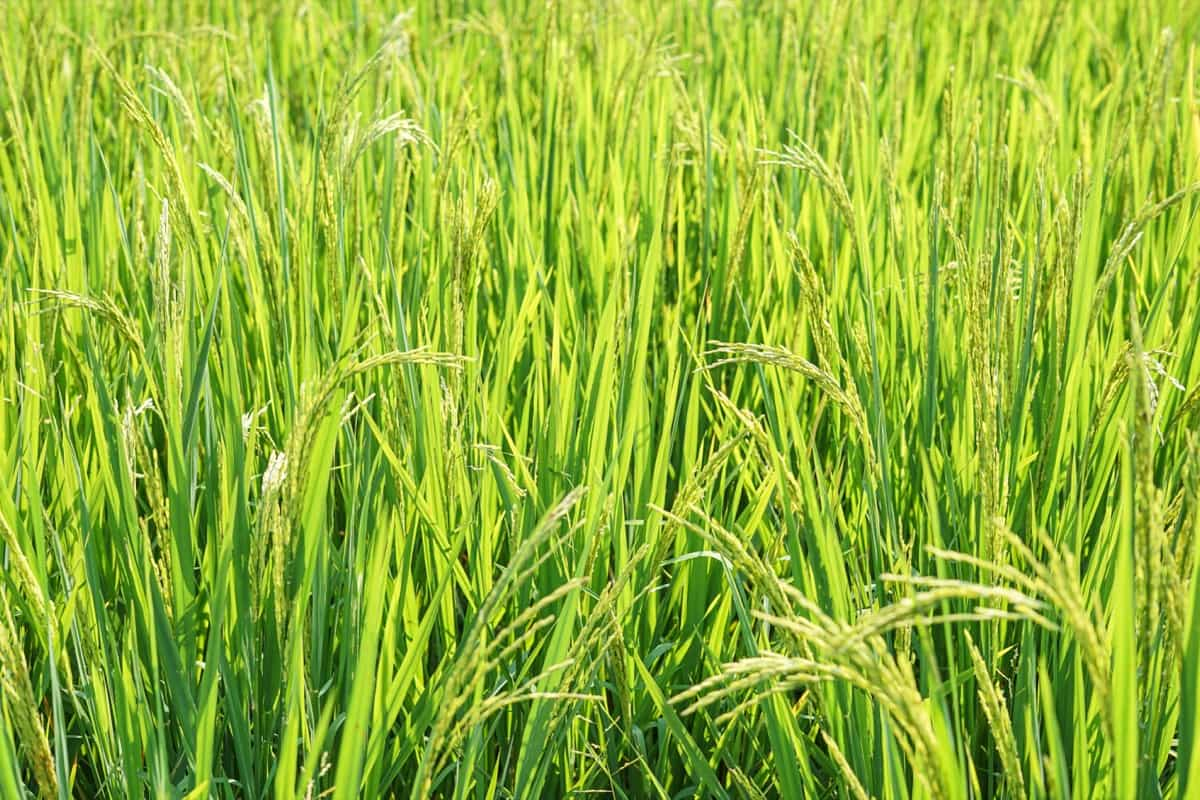
Ripening Stage (Flowering to Mature Grain)
- Milk Stage: After flowering, the grains start to fill with a milky substance. This stage requires careful water management to ensure proper grain development.
- Dough Stage: The grain hardens and accumulates starch.
- Maturity: The grain ripens, changing color and texture. This stage requires reduced water to prepare for harvest.
Importance of Pest Management in Paddy at the Panicle Initiation Stage
Blast: a fungal disease that causes spindle-shaped spots on leaves, nodes, and necks. It can reduce yield by 50% or more if not controlled. To manage blasts, use resistant varieties, balanced fertilization, proper water management, and fungicide sprays as recommended.
Leaf folder: An insect that folds the leaf blade and feeds inside, causing yellowing and drying of leaves. It can reduce yield by 10% to 30% if not controlled. To manage leaf folders, use resistant varieties, avoid excessive nitrogen, conserve natural enemies, and apply insecticides as recommended.
Stem borer: An insect that bores into the stem, feeds on the internal tissues, causing dead hearts and white heads. It can reduce yield by 5% to 10% if not controlled. To manage stem borer, use resistant varieties, avoid late planting, remove alternate hosts, flood the field periodically, and apply insecticides as recommended.
Common Pests Affecting Paddy at Panicle Initiation Stage
Stem borer: This pest can bore into the stem and cause dead hearts or whiteheads, which are tillers that do not produce panicles. The adult is a brownish moth with dark spots on the wings. The larva is a yellowish caterpillar with a dark brown head.
Gall midge: This pest can cause swelling or galls on the stem, which prevent the panicle from emerging. The adult is an orange-colored fly that lays eggs near the leaf blade. The maggot is pale red and feeds inside the stem.
Leaf roller: This pest can roll the leaves and feed on the leaf tissue, reducing photosynthesis and grain filling. The adult is a brownish moth with white stripes on the wings. The larva is a greenish caterpillar with dark spots on the body.
Hispa beetle: This pest can scrape the leaf surface and cause white patches or streaks, which reduce photosynthesis and grain filling. The adult is a black beetle with spines on the body. The larva is a yellowish grub that feeds inside the leaf tissue.
In case you missed it: RNR 15048 Paddy Cultivation Process: Low-Gl Rice, Sugar-free Rice, and Diabetic-Friendly Rice
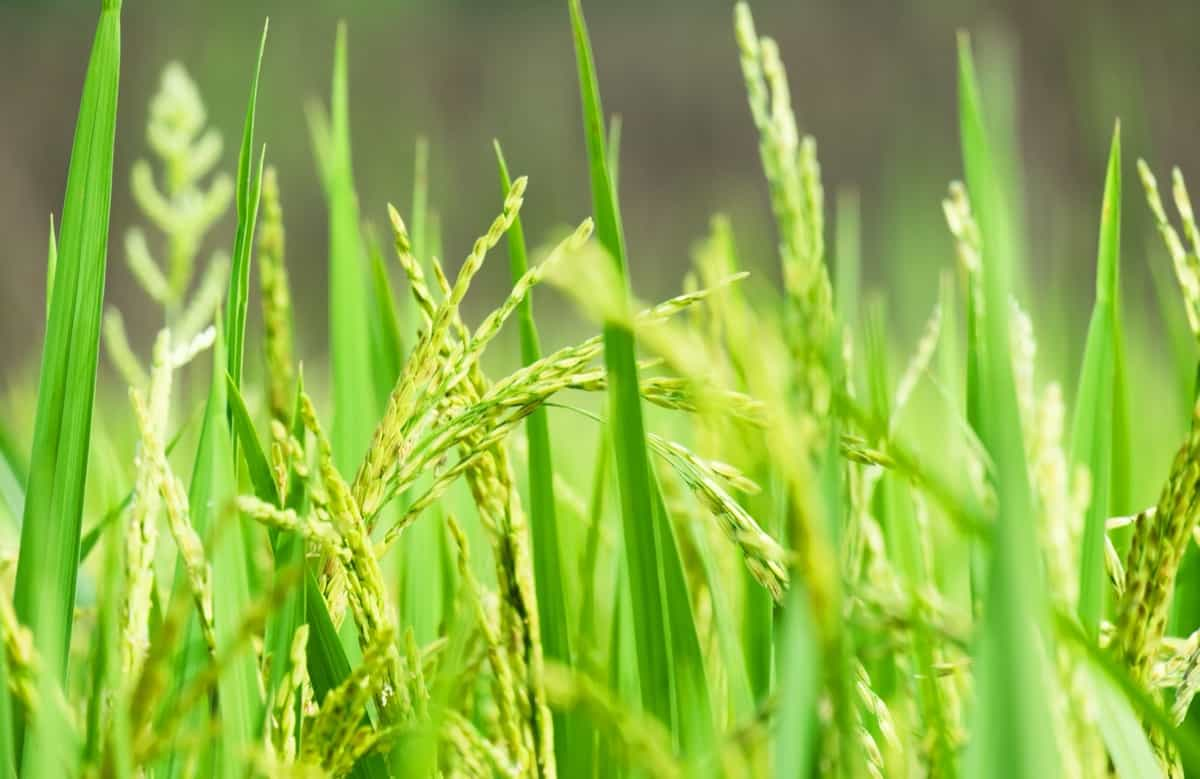
Planthopper: This pest can suck the sap from the stem and leaf, causing wilting, yellowing, or drying of the plant. The adult is a small brownish or greenish insect that jumps or flies when disturbed. The nymph is a wingless insect that crawls on the plant.
Armyworm: This pest can cut the leaves and young seedlings at the base or cut the panicles from the bottom, causing a loss of yield. The adult is a grayish moth with dark markings on the wings. The larva is a greenish or brownish caterpillar with stripes on the body.
Aphid: This pest can suck the sap from the stem and leaf, causing curling, stunting, or distortion of the plant. The adult is a small greenish or blackish insect that forms colonies on the plant. The nymph is a smaller form of the adult.
Integrated Pest Management Strategies for Paddy at the Panicle Initiation Stage
Integrated pest management (IPM) is an approach that combines different methods to prevent and control pests in paddy fields. IPM aims to reduce and effective use of chemical pesticides, protect the environment, and enhance the productivity and profitability of paddy cultivation.
- Use of blast-tolerant varieties, such as BR 2855.
- Seed treatment with fungicides, like carbendazim 50 WP.
- Clipping off the tip of paddy seedling before transplanting to reduce stem borer infestation.
- Release of tricho cards (cards containing parasitic wasps) to control leaf folder and other larval pests.
- Use of pheromone traps to monitor and trap planthoppers.
- Need based spray of insecticides, such as Kitazin 45 EC or chlorpyriphos 20 EC, only when the pest population exceeds the economic threshold level.
- Removal and destruction of diseased plant parts, such as infected stubbles.
- Use of optimum plant spacing to avoid overcrowding and disease spread.
- Application of balanced fertilizers and micro-nutrients as per local recommendations.
- Application of foliar spray of calcium sulfate and zinc sulfate to prevent sheath rot.
Chemical Control Methods for Pest Management in Paddy at Panicle Initiation Stage
Chemical control methods are used to kill or repel pests using synthetic or natural substances. Chemical control methods should be used as a last resort only when other methods fail or are not feasible. Chemical control methods should be applied judiciously, following the label instructions and safety precautions.
In case you missed it: Paddy Cultivation through Direct Seeding Technology: A Profitable Rice Production Method
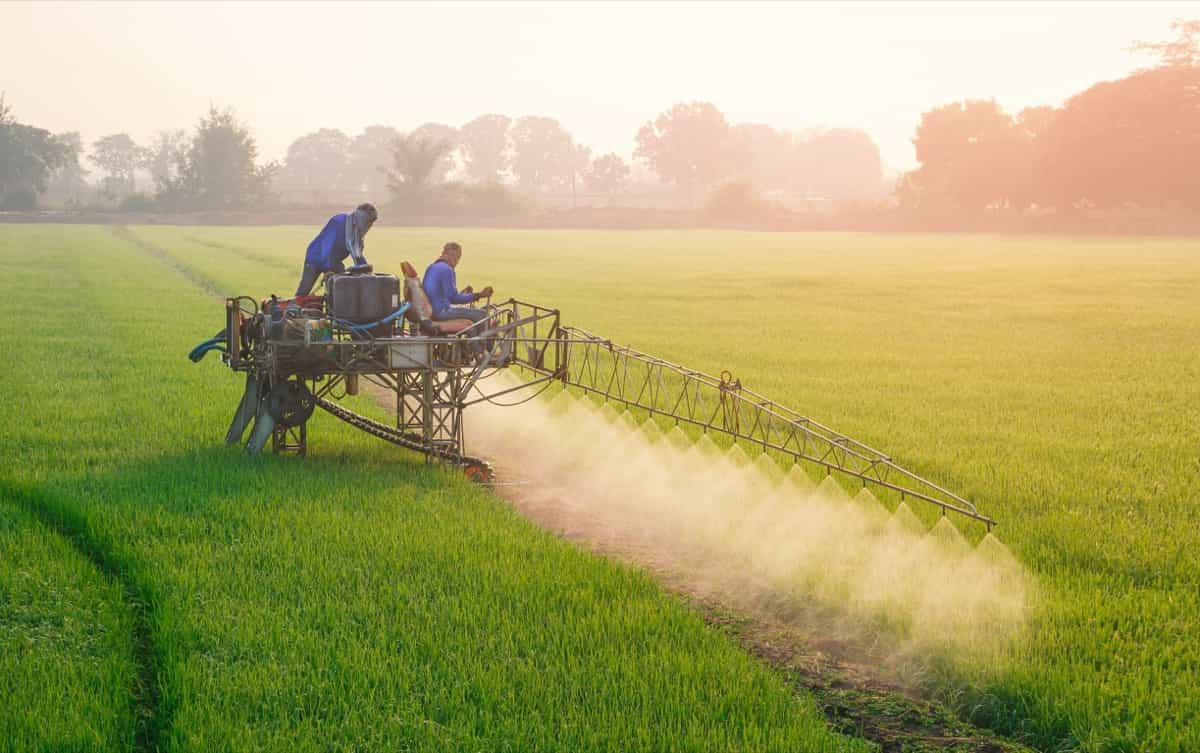
- Soaking the seedling roots in 0.02% chlorpyriphos solution for 12 to 14 hours before transplanting to protect them from root-knot nematodes and other soil-borne pests.
- Applying granular insecticides, such as fipronil 0.3G or chlorpyriphos-methyl 10G, to the soil to control stem borers, leaf folders, and planthoppers.
- Spraying liquid insecticides, such as chlorpyriphos 20 EC or fipronil 5 SC, to the foliage to control armyworms, leafhoppers, and thrips.
- Spraying fungicides, such as carbendazim or tricyclazole, to prevent and treat blast disease.
Biological Control Measures for Pest Management in Paddy at Panicle Initiation Stage
Biological control measures are used to reduce pest populations by introducing their natural enemies, such as predators, parasites, or pathogens. Biological control measures are eco-friendly, cost-effective, and sustainable.
- Releasing parasitic wasps, such as Trichogramma japonicum or Telenomus dignoides, to parasitize the eggs of stem borers and leaf folders.
- Releasing entomopathogenic fungi, such as Lecanicillium lecanii or Beauveria bassiana, to infect and kill sucking pests and larval pests.
- Erecting bird perches to attract predatory birds, such as mynas, drongos, or kingfishers, to feed on insects and rodents.
- Installing light traps to attract and kill nocturnal insects, such as moths or beetles.
Cultural Practices for Pest Management in Paddy at Panicle Initiation Stage
- Summer plowing to expose and kill the overwintering stages of pests
- Growing suitable resistant varieties that can tolerate or escape pest attack
- Using recommended doses of fertilizers, especially nitrogen, to avoid excessive vegetative growth that attracts pests
- Clipping of the leaf tips of seedlings while planting to remove the eggs of stem borer
- Adopting normal spacing to avoid overcrowding and poor ventilation that favors pest multiplication
- Formation of alleyways to facilitate pest monitoring and spraying
- Alternate wetting and drying to disrupt the life cycle of pests that depend on water
These practices can also help in reducing the incidence of diseases such as blasts, sheath blight, bacterial leaf blight, etc., by improving plant health and immunity.
In case you missed it: Stem Borer Management in Paddy Farming: Symptoms, Rice Damages, Natural, Organic, Chemical, and Biological Control
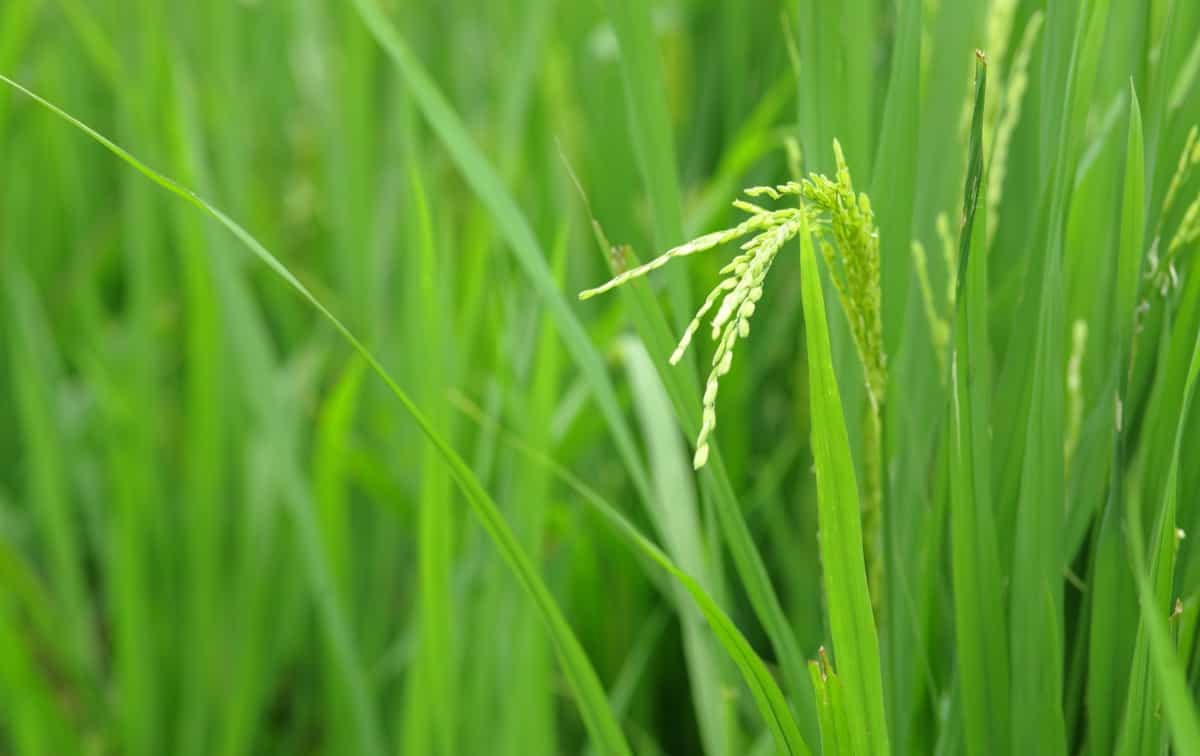
Economic Impact of Pest Infestation on Paddy at Panicle Initiation Stage
Pest infestation on paddy at the panicle initiation stage can have a significant economic impact on farmers and consumers. The panicle initiation stage is when the rice plant starts to form the reproductive organs that will eventually produce grains. Any damage to these organs can result in yield loss, poor grain quality, and reduced market value.
Weed pests caused a maximum loss in seed yield (37.02%), followed by insect pests (27.9%) and disease pests (15.6%) in paddy crops. The insect pests that cause major damage at the panicle initiation stage are stem borer, leaf folder, plant hopper, gall midge, etc. The diseases that affect paddy at this stage are blast, sheath blight, bacterial leaf blight, etc.
The economic impact of pest infestation on paddy can be estimated by considering the cost of pest control measures, the loss of yield and quality, and the price of rice in the market. The cost-benefit analysis can help decide the optimal level of pest management that can maximize profit and minimize risk.
Environmental Considerations in Pest Management for Paddy at Panicle Initiation Stage
Pest management for paddy at the panicle initiation stage should also take into account the environmental considerations that can affect the sustainability and safety of rice production. The indiscriminate use of pesticides can have negative impacts on the environment.
- Pollution of soil, water, and air by pesticide residues
- Destruction of natural enemies that can provide biological control of pests
- Development of pest resistance to pesticides
- Harm to human health and wildlife by exposure to pesticides
- Integrated pest management (IPM) that combines cultural, biological, mechanical, and chemical methods of pest control
- Ecological engineering enhances the biodiversity and ecosystem services in rice fields by planting flowers, grasses, trees, etc., that attract natural enemies and pollinators.
- Use of eco-friendly pesticides that are biodegradable, selective, and safe for humans and non-target organisms
- Use of proper application techniques and equipment that minimize pesticide drift and runoff.
In case you missed it: Rice Blast Disease in Paddy Crop: Symptoms, Causes, Control Management, and Treatment
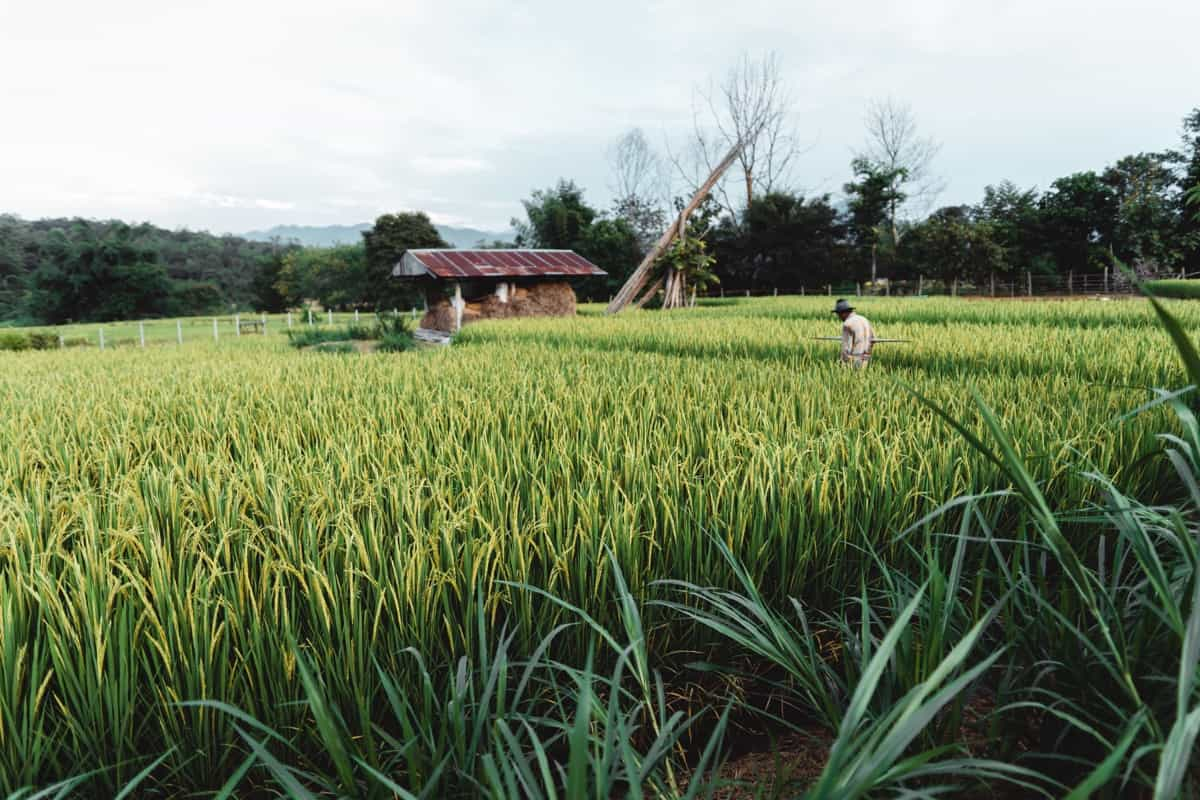
Conclusion
Effective pest management in paddy during the panicle initiation stage is crucial for a healthy rice crop. This phase, vulnerable to various pests, demands precise interventions for optimal growth and yield. Understanding and implementing targeted pest control strategies ensures not only the protection of the crop but also contributes to the sustainability and productivity of rice farming practices.
- Types of Pesticides Used in Agriculture: A Beginner’s Guide
- Economical Aquaculture: A Guide to Low-Budget Fish Farming
- 15 Common Planting Errors That Can Doom Your Fruit Trees
- How to Make Houseplants Bushy: Effective Tips and Ideas
- Innovative Strategies for Boosting Coconut Pollination and Yield
- Pollination Strategies for Maximum Pumpkin Yield
- The Complete Guide to Chicken Fattening: Strategies for Maximum Growth
- Natural Solutions for Tulip Problems: 100% Effective Remedies for Leaf and Bulb-Related Issues
- Revolutionizing Citrus Preservation: Towards a Healthier, Greener Future
- Natural Solutions for Peony Leaf and Flower Problems: 100% Effective Remedies
- Maximizing Profits with Avocado Contract Farming in India: A Comprehensive Guide
- Natural Solutions for Hydrangea Problems: 100% Effective Remedies for Leaf and Flowers
- The Ultimate Guide to Choosing the Perfect Foliage Friend: Bringing Life Indoors
- From Sunlight to Sustainability: 15 Ways to Use Solar Technology in Agriculture
- The Ultimate Guide to Dong Tao Chicken: Exploring from History to Raising
- The Eco-Friendly Makeover: How to Convert Your Unused Swimming Pool into a Fish Pond
- Mastering the Art of Delaware Chicken Farming: Essentials for Healthy Backyard Flocks
- 20 Best Homemade Fertilizers for Money Plant: DIY Recipes and Application Methods
- How to Craft a Comprehensive Free-Range Chicken Farming Business Plan
- Brighten Your Flock: Raising Easter Egger Chickens for Beauty and Bounty
- How to Optimize Your Poultry Egg Farm Business Plan with These Strategies
- Subsidy for Spirulina Cultivation: How Indian Government Schemes Encouraging Spirulina Farmers
- Ultimate Guide to Raising Dominique Chickens: Breeding, Feeding, Egg-Production, and Care
- Mastering the Art of Raising Jersey Giant Chickens: Care, Feeding, and More
- Ultimate Guide to Raising Legbar Chickens: Breeding, Farming Practices, Diet, Egg-Production
- How to Raise Welsummer Chickens: A Comprehensive Guide for Beginners
- How to Protect Indoor Plants in Winter: A Comprehensive Guide
- Ultimate Guide to Grow Bag Gardening: Tips, Tricks, and Planting Ideas for Urban Gardeners
- Guide to Lotus Cultivation: How to Propagate, Plant, Grow, Care, Cost, and Profit
- Agriculture Drone Subsidy Scheme: Government Kisan Subsidy, License, and How to Apply Online
- Ultimate Guide to Raising Araucana Chickens: Breed Profile, Farming Economics, Diet, and Care
- Bringing Hydroponics to Classroom: Importance, Benefits of Learning for School Students
- Ultimate Guide to Raising Polish Chickens: Breed Profile, Farming Economics, Diet, and Care
- Ultimate Guide to Raising Australorp Chickens: Profile, Farming Economics, Egg Production, Diet, and Care
- Silkie Chicken Farming: Raising Practices, Varieties, Egg Production, Diet, and Care
- Sussex Chicken Farming: Raising Practices, Varieties, Egg Production, Diet and Care